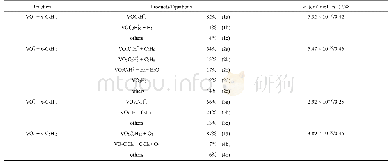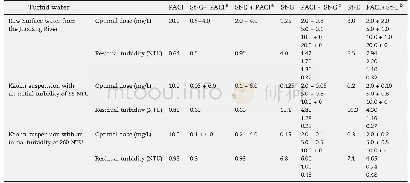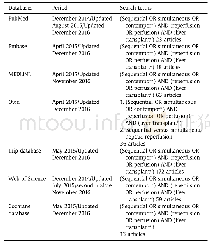《Table 2 Details of the foils and their measured reaction rate and activity》
 提示:宽带有限、当前游客访问压缩模式
提示:宽带有限、当前游客访问压缩模式
本系列图表出处文件名:随高清版一同展现
《A study of PFBR auxiliary neutron source strength activation and its variability with respect to the neutron spectrum and ~(123)Sb capture cross section》
where A1and A2are the activities of123Sb and197Au(Bq),and N1and N2are the number of atoms of123Sb and197Au,respectively;r1represents the average capture cross section of123Sb.The cadmium-covered samples are sandwiched between cadmium foils.The presence of cadmium reduces not only the thermal component,but also the total neutron strength.The antimony is activated mainly by epithermal neutrons.The reduced neutron flux that activates the antimony or gold is approximated using the attenuation equation/?/oeàRtt,where/oand/are the incident and transmitted neutron fluxes,respectively,Rtis the macroscopic total cross section of cadmium,and t is the thickness of the cadmium foil.Then,following a methodology similar to that used for the bare samples,the average activation cross sections of the cadmium-covered gold and antimony samples are obtained.The measured activities and the cross sections obtained using Eq.(4)are given in Table 2.It is observed that,owing to the spectral change,the average capture cross section of123Sb decreases from4.1 to 1.78b.The measured and calculated reaction rates for bare123Sb are 1.24 9 10-12and 1.34 9 10-12reactions/atom/s,respectively.The difference between the measured and calculated values is approximately 8%.The experimental study helped to validate the one-group cross section of123Sb and hence the123Sb activation with the nearest available spectrum from KAMINI.Further sensitivity studies are presented in the following sections.
| 图表编号 | XD0065045700 严禁用于非法目的 |
|---|---|
| 绘制时间 | 2019.08.01 |
| 作者 | G.Pandikumar、D.Sunil Kumar、M.M.Shanthi、Bagchi Subhrojit、A.John Arul、D.Venkata Subramanian、Rajeev Ranjan Prasad |
| 绘制单位 | Reactor Shielding and Data Division, Department of Atomic Energy,Nuclear Systems Design Group, Reactor Design Group, Indira Gandhi Centre for Atomic Research、Reactor Shielding and Data Division, Department of Atomic Energy,Nuclear Systems Design Group, Re |
| 更多格式 | 高清、无水印(增值服务) |
查看“Table 2 Details of the foils and their measured reaction rate and activity”的人还看了
-

- Table 1 Products, pseudo-first-order rate coefficients (k) , and reaction efficiencies (Φ) for the reactions investigate
-

- Table 2–The performance of various coagulants and their combinations (optimal dose and corresponding residual turbidity)





